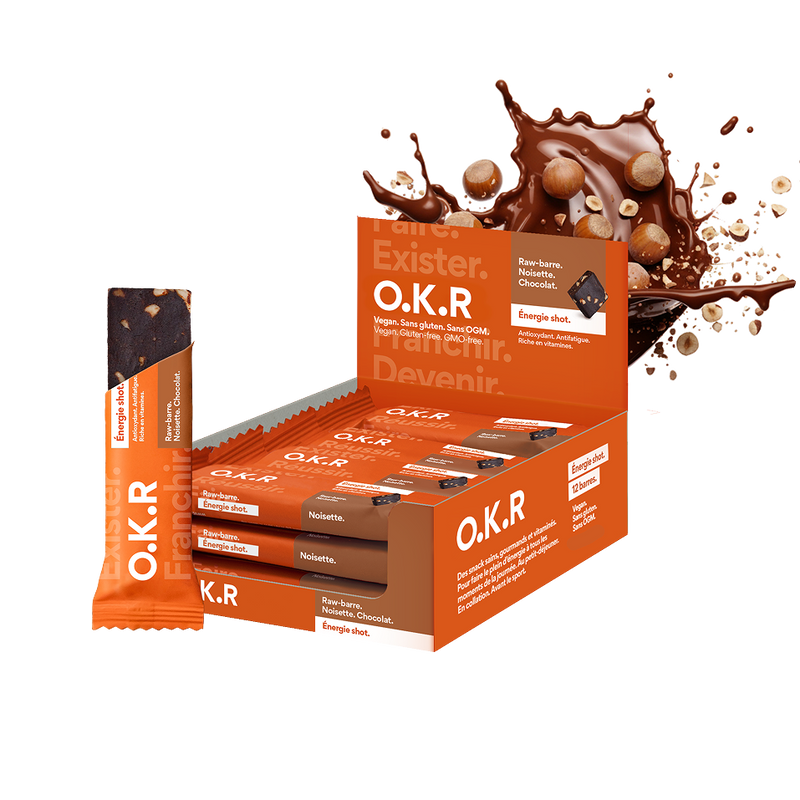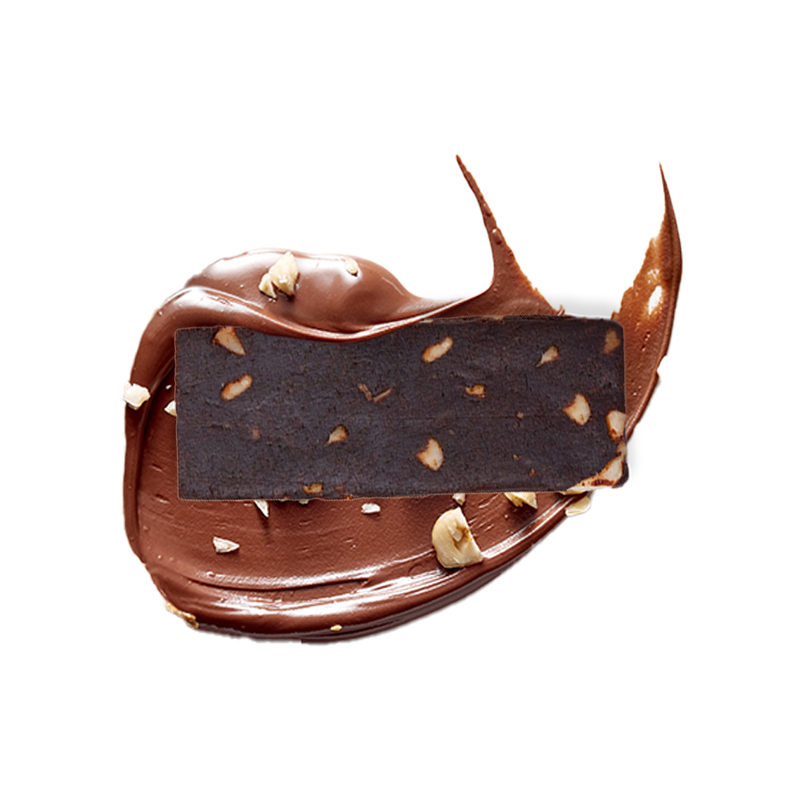A calorie is a unit of measurement. It measures the energy value of foods. They are all composed of macronutrients: carbohydrates, fats, and proteins. These are sources of calories, but the amount each contains varies. Please note: in this article, we provide you with the official nutritional recommendations from ANSES. These figures refer to an average recommendation.
Do you want to rebalance your diet or lose a few inches from your waistline, but have no idea about your energy needs and what your daily meals provide? Calorie counting can help you gain or lose weight. Indeed, when you want to lose weight, you must be in a calorie deficit, meaning you must expend more calories than you consume.
In this article, you'll find some nutritional advice to help you gain a clearer picture of what you're eating, as well as the impact each food has on your daily intake.
Carbohydrates.
Too familiarly referred to as sugars, carbohydrates are an important source of energy that is easily usable by your body. They are the essential fuel for your body. There are two types of carbohydrates:
- Simple carbohydrates. A source of energy that can be quickly used by the body. e.g., sugar, honey, syrup, candy, cans of soda, fruit, etc.
- Complex carbohydrates. Their slow assimilation therefore limits blood sugar spikes. Ex: Grain products (oat flakes, rice), legumes (peas, soy), bread, etc.
For a daily intake of 2000 kilocalories per day, ANSES (French National Agency for Food, Environmental and Occupational Health Safety) recommends consuming between 200 and 275 g of carbohydrates per day.
Calories per 100g of carbohydrate-rich foods.
| Viennese pastries | 400 calories |
| Wholemeal dough: | 350 calories |
| Oats | 350 calories |
| White rice | 340 calories |
| Fruit paste | 310 calories |
| Bread | 264 calories |
| Jam | 240 calories |
| Soda | 100 calories |
| Potato | 100 calories |
| Fruit juice | 54 calories |
Proteins.
Present in every cell, proteins play a vital role in your growth, building and renewing your muscles, your appendages (hair, fur and nails), your bone matrix and your skin. There are two sources of proteins:
- Animal proteins . Meat, fish, eggs, dairy products, etc. all contain amino acids in large quantities.
- Plant-based proteins come from grains (oats, rice, etc.) and legumes (peas, soy, etc.). While each source of plant-based protein can be deficient in certain essential amino acids, it is easy to combine different plant-based ingredients to achieve a complete amino acid intake. OKR products contain a combination of legumes and grains to ensure optimal amino acid content.
Calories per 100g of protein-rich foods.
| Chickpea | 365 calories |
| Salmon | 217 calories |
| Egg | 150 calories |
| Turkey | 125 calories |
| Chicken breast | 121 calories |
| Split peas | 121 calories |
| Lens | 116 calories |
| Plain yogurt | 50 calories |
| Semi-skimmed milk | 45 calories |
Lipids.
Commonly referred to as "fats," lipids have a bad reputation because they are considered responsible for many diseases (obesity, hypertension, high cholesterol, cardiovascular disease, etc.). In addition, many people mistakenly believe that eating fat will automatically lead to fat gain. However, they are just as important as other nutrients.
In addition to being excellent sources of energy, they are essential components of your body's proper functioning, such as certain hormones. There are different types of fatty acids within the lipid family:
- Saturated fatty acids. While an important source of energy, it is still recommended to consume them in moderation because they can increase bad cholesterol levels. Ex: Butter, cream, palm oil, coconut, chocolate, etc.
- Monounsaturated fatty acids. Also known as omega-9, they are often considered good fats because they reduce the risk of cardiovascular disease. Examples include oilseeds, olive oil, avocado, etc.
- Polyunsaturated fatty acids. Also called omega 3 and omega 6, these are essential fatty acids for the proper functioning of the cardiovascular system. Ex: Omega 3: oily fish (salmon, mackerel), walnuts, hemp seeds, flax seeds, almonds, etc. Omega 6: sunflower seeds, walnuts, cashews, etc. 03.
How to balance your diet?
It's important to consider food as a whole and not demonize certain ingredients. They all play a role in our nutritional balance and health. For a daily intake of 2,000 kilocalories, ANSES recommends that:
- Carbohydrates should represent between 40 and 55% of total calorie intake, or 200 to 275 g.
- Proteins should represent between 10 and 20% of the total intake, or 50 to 100 g.
- Lipids should represent 35 to 40% of the total intake, or between 70 and 90 g.
It is therefore important that the content of the intake of what you eat corresponds to your needs.
How to calculate your calorie expenditure and needs?
Knowing how many calories your body needs helps you adjust your intake to meet your goals. There are different metrics to calculate these, such as BMR, NBP, and JRE.
Your basal metabolic rate (BMR):
You can calculate it using the formulas of Harris and Benedict (1984):
- MB male (kcal) = 13.707 x weight (in kg) + 492.3 x height (in meters) – 6.673 x age (in years) + 77.607
- MB female (kcal) = 9.740 x weight (in kg) + 172.9 x height (in meters) – 4.737 x age (in years) + 667.051
This is the minimum daily energy expenditure that allows your body to survive at rest. It is linked to your breathing, the functioning of your body and brain, etc.
Did you know?
If you are overweight, the formula to use to calculate your basal metabolic rate is that of Black et al. (1996):
- MB male (kcal) = 259 x (weight^0.48 x height ^0.50 x age^-0.13)
- MB female (kcal) = 230 x (weight ^0.48 x height ^0.50 x age^-0.13)
Your physical activity level (PAL):
This corresponds to the energy expenditure linked to various daily life activities depending on their duration.
Examples of related activities.
NAP < 1 (sedentary activity) Little travel, little leisure physical exercise, office worker.
1.6 - 1.7 (moderate activity) Short trips, office worker with outdoor leisure activities on weekends or standing work.
1.8 - 1.9 (significant activity) Practices more than 3 hours of sport per week, numerous outdoor leisure activities, intensive professional activity.
> 2 (very high physical activity) Practices more than 6 hours of sport per week, outdoor leisure activities, numerous intensive professional activities.
Once your basal metabolism and your NAP are defined, you simply need to perform the following calculation to obtain your daily energy expenditure (DEJ):
DEJ = MB x NAP
The resulting number represents an estimate of your daily energy expenditure related to your body's functioning and physical activity. This number represents the amount of calories you need to consume each day to meet your needs and your physical activity. Once this figure is established, you must:
- As part of weight loss: reduce your daily intake to get below this number.
- As part of a mass gain: increase your daily intake to get above this number.
- As part of stabilizing or maintaining your weight: keep a stable intake, more or less equal to this number.
Did you know?
There's no need to jump right into your diet by subtracting 1,000 calories from your EAT. Start by consuming 100 calories less than your EAT for 10 days. This will allow you to see how your weight curve is changing and adjust your intake later (further reduce the number of calories consumed per day or not). Repeat the process until you reach your goal.
In summary.
There's no need to restrict yourself to reach your ideal weight; learn to listen to your body and your feelings. Contrary to what you might think, there's no need to restrict yourself to eat healthy, achieve your goals, or lose those extra pounds. Instead, take your time and avoid frustration.
Regular exercise remains essential for maintaining your figure.
Find all our articles on the same subject:





















